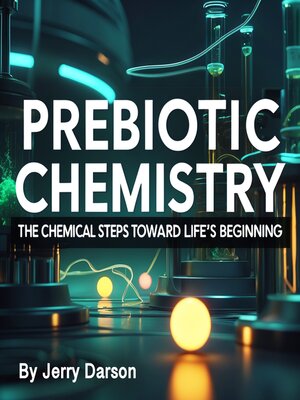Prebiotic Chemistry
audiobook (Unabridged) ∣ The Chemical Steps Toward Life's Beginning
By Jerry Darson

Sign up to save your library
With an OverDrive account, you can save your favorite libraries for at-a-glance information about availability. Find out more about OverDrive accounts.
Find this title in Libby, the library reading app by OverDrive.



Search for a digital library with this title
Title found at these libraries:
| Library Name | Distance |
|---|---|
| Loading... |
This audiobook is narrated by a digital voice.
Prebiotic chemistry explores the chemical processes that preceded the emergence of life on Earth. It seeks to understand how simple molecules, under the right environmental conditions, could assemble into increasingly complex compounds—ultimately forming the building blocks necessary for life. This field operates at the intersection of chemistry, planetary science, and biology, providing crucial insights into the transition from non-living matter to living systems.
The origins of chemical evolution are rooted in the idea that life did not suddenly appear but was the result of gradual molecular development. In the early Earth's history, the planet was a dynamic environment shaped by volcanic activity, ultraviolet radiation, lightning, and meteorite impacts. These factors, along with the presence of water and atmospheric gases like methane, ammonia, and hydrogen, created a setting ripe for chemical transformations. It is within this volatile yet chemically fertile environment that the first organic molecules—such as amino acids, sugars, and nucleotides—could have formed.
Organic molecules, though simple in structure, are the fundamental components of all living organisms. Understanding their prebiotic formation helps explain how life might have begun. These molecules are capable of self-organization and interaction, forming more complex assemblies under suitable conditions. For example, amino acids can link together into peptides, and nucleotides can polymerize into RNA or DNA strands. The formation of these complex macromolecules from simpler units is a key aspect of prebiotic chemistry, providing a bridge between inert matter and the dynamic systems that define life.







